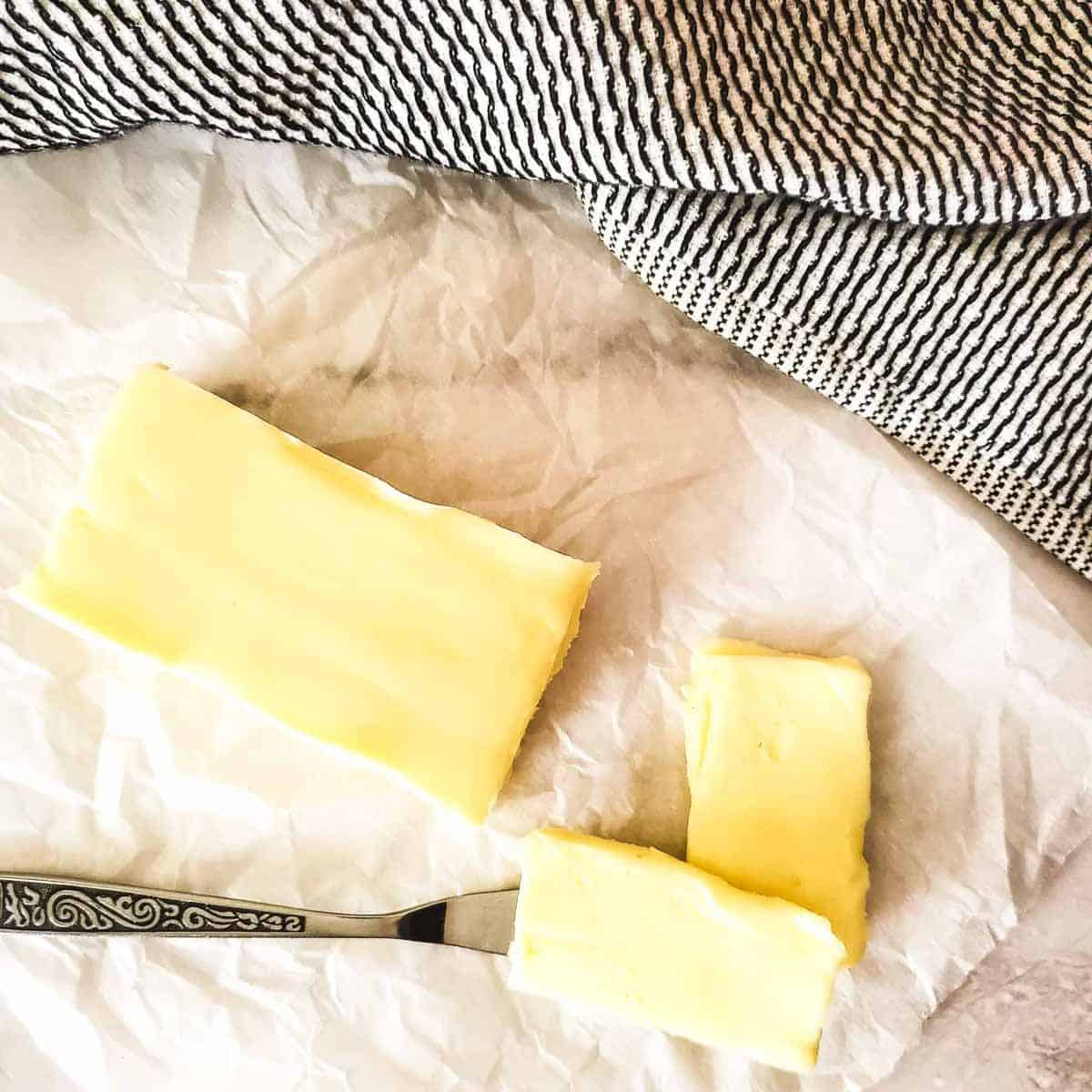
Servings: 1 lbs
Calories: 3420kcal
Equipment
- Hand Mixer (or blender or butter churn)
- Bowls
- Silicone spatula
Ingredients
- 1 litre cream raw or pasteurized, preferably not UHT, but it will do in a pinch.
- teaspoon fine sea salt not iodized, optional
Instructions
For Making Raw Cultured Butter From Raw Cream
- Leave your cream out on your counter at room temperature, covered, for 24 hours before proceeding to the following steps.
For Making Cultured Butter From Pasteurized Cream
- Add 1 tablespoon of kefir or yogurt (any kind) for every 1 cup of pasteurized cream. Stir and place in the refrigerator for 24 hours and up to 3 days before proceeding to the next steps.
For Making Sweet Cream Butter From Pasteurized OR Unpasteurized Cream
- No special preparation is required. Proceed with the following steps to make butter.
- Allow your cream to come to room temperature, or close to it, about 30 minutes to 1 hour. This makes the butter easier to mix and separate.
- Take your cream and place it into a large bowl.
- Start mixing your cream. Whether you are using a hand-mixer like I prefer, a blender, a traditional butter churner, or shaking a jar vigorously — the process is the same. The agitation of the cream will cause the fat to separate from the liquid. This can happen as fast as 5 minutes or may take longer than 20 minutes. Usually it takes about 10-15.
- You will eventually (10ish minutes) get whipped cream, keep going.
- After about 10-15 minutes, the whipped cream will separate into yellow fat butter globules and a milky-yellow liquid. Keep going for a couple more minutes until the fat is well separated.
- Using a colander, strain out the buttermilk from the butter into another bowl. Using a wooden spoon or silicone spatula (or your cold hands), continue to get out as much of the buttermilk as possible.
- When you have squeezed out as much buttermilk as possible, add a pinch of salt (or more if making salted butter) and work it into the butter.
- Using either your hands or a wide silicon spatula, wash your butter well under cold running water, or directly in a large bowl filled with cold water, kneading and squishing it well.
- The cold of the water will firm up the butter making this part easier, and eventually, your water will run clear and not cloudy, meaning that the buttermilk has been well and properly extracted. (I prefer to do the washing in another bowl under constant running water.)
- Store butter refrigerated for up to 3 weeks, or frozen for up to 1 year.
Video
Notes
Cultured butter is butter made from fresh cream that has been allowed to culture (ferment) at room temperature for about 24 hours. It is traditionally made with raw cream.
You can make cultured butter with pasteurized cream, but you must add a culture to it to do so safely (more on that below).
Sweet cream butter is made from fresh cream that is churned or whipped/mixed into butter. It can be made easily (and in the exact same way) with raw cream or pasteurized cream.
Sweet cream butter is what most people in North America are familiar with. Your grocery store may not even have cultured butter which is much more common in Europe.
Making Cultured Butter With Pasteurized Milk
You can use kefir or yogurt to culture pasteurized cream and turn it into a sort of copy of cultured butter. But you cannot leave pasteurized cream out at room temperature for long periods of time.How To Make Butter From Milk
If you have fresh raw or pasteurized milk that is not homogenized (the cream has risen to the top) you can skim the cream off and use that. You can't, however, make butter from milk itself or from homogenized milk which has no cream to skim.How To Make Butter In A Blender
- Pour room temperature cream into blender.
- Blend until the cream separates and watch the entire time.
- This can happen in a minute with a powerful blender like a Vitamix, or it can take up to 10 minutes in an older or slower blender.
- I recommend blending on low (if possible) if using this method. The hand mixer is much simpler, easier to clean up, and easier to get the butter out, especially as their are no sharp blades.
Substitutions & Variations
Salted Or Unsalted: Make unsalted or salted variations. This information is in the recipe card at the bottom. Herbed Compound Butter: Add fresh or dried herbs into your butter. Or even wild ramps! This is a great way to preserve fresh herbs by making compound butters you can freeze and use throughout the year as needed. Butter Of The Gods: Mix roasted or smoked bone marrow with your fresh butter in a 50/50 ratio and use it on steaks, roasted potatoes, roasted vegetables. Herbed butter works really well in this preparation, especially parsley, and I recommend adding salt or even smoked salt (recipe). I have a recipe for roasted bone marrow you can use.Storage & Freezing
Butter does and will go rancid. Especially raw butter. Luckily butter can be frozen with no noticeable loss in quality. Raw butter will last up to 3 weeks refrigerated. The shelf life of homemade raw butter will depend on how well you washed the butter and extracted the buttermilk. If you did a poor job of this, it will likely sour within a week.Nutrition
Serving: 1tablespoon | Calories: 3420kcal | Carbohydrates: 29g | Protein: 29g | Fat: 363g | Saturated Fat: 231g | Polyunsaturated Fat: 16g | Monounsaturated Fat: 92g | Cholesterol: 1137mg | Sodium: 272mg | Potassium: 956mg | Sugar: 29g | Vitamin A: 14788IU | Vitamin C: 6mg | Calcium: 664mg | Iron: 1mg
Tried this recipe?Let us know how it was!